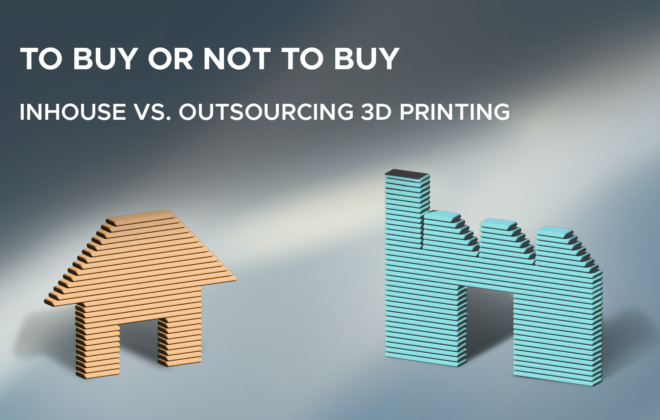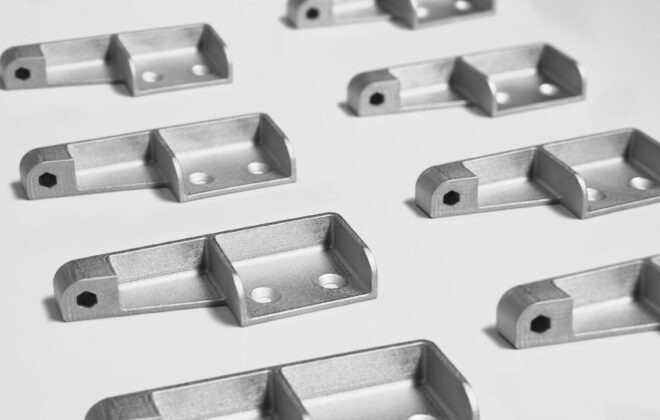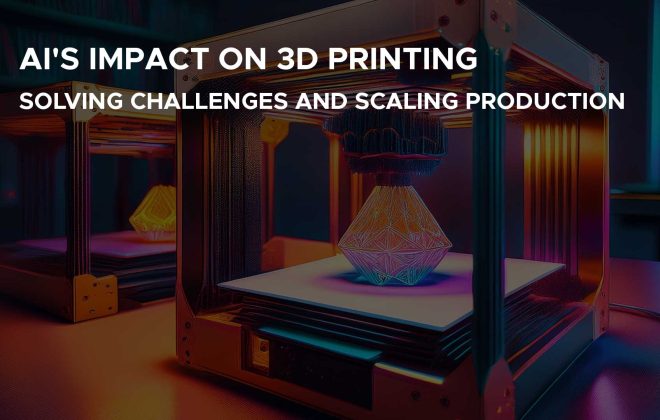How to improve your aftermarket management with a digital inventory
The world seems to get more and more digital by the day. However, in the spare part market it seems like nothing has changed in the last decades. Managing suppliers, huge inventories, part availabilities and demand variations makes spare part management very cost inefficient. Let’s have a deeper look at the problems that an aftermarket manager faces and see how a digital inventory with on-demand 3D printing can help to solve them.
Huge Inventories
To serve their customers with the needed spare parts, most of the original equipment manufacturers (OEMs) decide to keep all spare parts on stock. Sometimes they even have multiple warehouses in different locations. This leads to huge inventory costs (roughly 20% of total spare part price). According to the results of our customer interviews, moreover 66% of the spare parts in inventory are rarely needed as they are for parent products in the end of the lifecycle. Some companies try to keep their inventory costs low by only keeping the most relevant parts on stock. However, this leads to another big pain point.
Availability of Spare Parts
If the OEM cannot provide the end-customer with the needed spare part, this leads to a bad reputation. The asset of the end-customer either gets useless or the customer has to find another supplier on the grey market.
Many times, suppliers of spare parts for old machinery no longer exist or no longer produce those parts. However, it may be necessary to still manufacture the item if it is of high relevance to the asset. According to our findings, in this case cost of a spare part increases by up to 20 times. There are three major pain points behind that:
Re-tooling and production set-up: If a part has to be re-manufactured, huge costs for re-tooling (a new mold might be necessary) and production (due to small batch sizes) arise.
Huge Minimum Order Quantities (MOQ): To make the production economically viable, the manufacturers force huge minimum order quantities towards the OEM or other dealers. The amount not needed goes either in storage or has to be disposed. This furthermore negatively influences the company’s environmental footprint.
Long Lead times and shipping costs: The time from procuring to delivering the spare part to the end-customer is getting very long (weeks to month). The related costs rise even higher, if the customer lives at the other side of the world.
The potential of aftermarket services
Those reasons may be the cause why OEMs prefer to focus on new equipment. But there is actually a huge opportunity in selling aftermarket services, as seen in the graphic by McKinsey.

So how can OEMs actually make use of this huge potential for spare parts with unsure or lower demand? The solution is a digital inventory using 3D printing.
The solution – Building a digital inventory
With the use of a digital inventory, you can store spare parts as a digital file and produce them on-demand using 3D printing technologies. By this, inventory costs are zero, and spare parts are available for an infinitive period. Aftermarket parts can be printed at any time and in any location, which saves transportation time and costs and also increases the service level of an OEM.
Moreover, you can now produce parts in small quantities, starting from lot size one, and with reasonable costs. A digital inventory using 3D printing also has a positive impact on the environment. Customers no longer have to dispose items, when spare parts are not available anymore.
There are already some companies using 3D printing to increase aftermarket services and reduce related costs, such as Deutsche Bahn and Daimler Benz. So why is it, that not everyone is using the technology yet?
Why is not everyone having a digital inventory yet?
The reason is simple: There are some challenges in adopting a digital inventory strategy to your existing company structures. First of all, it is difficult to find printable spare parts, as not all parts are suitable for 3D printing. Secondly, you need a CAD file to 3D print the product. Often, OEMs do not have these, which leads to huge efforts in converting parts into a digital CAD file. Thirdly, managing both digital inventory as well as the production processes and staying cost competitive in the same time is difficult for OEMs, that are not experienced with 3D printing. And last, but not least, they need an infrastructure of 3D printers and of course the knowledge about the technology itself.
Replique’s End-to-End services for a digital inventory strategy
Replique solves those challenges by providing an end-to-end solution for OEMs. With the use of Replique’s digital inventory platform, you can easily shift from a physical to a digital inventory. We start with an onboarding process and help you to find printable spare parts (technical and economical). Then we arrange all the parameters for best quality printouts. Our platform provides digital warehousing, as well as the production and distribution of parts. To print them in best quality we have a network of qualified 3D printing service bureaus.
Quality and safety are our number one priorities. We encrypt all data sets on our platform to secure your intellectual property; by that we also enforce printing parameters to ensure high quality. Moreover, you can easily integrate the platform into existing processes as we connect existing ordering channels. With our platform for on-demand 3D printing, we can help you leveraging the full potential of a digital inventory and decentralized additive manufacturing of spare parts and accessories: easy, secure, fast and customer oriented.
For more information about us, read what we do and stand for.
Are you interested how we can help you? Drop us a note on: info@replique.io
Related Posts
Categories
- 3D printing industries (6)
- 3D Printing Materials (1)
- Basics (3)
- News (1)
- Point of View (10)
- Press (20)
- Press (20)
- Sustainability (3)
- Technology (6)
- Uncategorized (1)
- White Paper (1)



